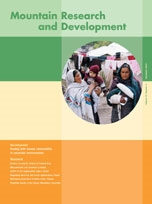Earth Repair: A Transatlantic History of Environmental Restoration by Marcus Hall. Charlottesville, VA: University of Virginia Press, 2005. xvi + 310 pp. US$35. ISBN 0-8139-2341-7.
A look into major journal databases quickly reveals that restoration ecology and rehabilitation studies are emerging research fields. They are largely based on a synthesis of ecological theory and environmental management procedures. Restoration ecology is commonly understood as “the study of how to repair anthropogenic damage to the integrity of ecological systems” (Cairns and Heckman 1996). But what do scientists, engineers, or politicians mean when using the terms “repair,” “degraded” or “natural”? How much “restoration” is needed on land that has been heavily sculptured by humans over decades to centuries? Is landscape restoration as debatable as the restoration of an ancient piece of art restored using techniques that were not available when it was created? These are only few examples of a fundamental historical and philosophical debate that should be an essential component of a modern discourse on restoration ecology. This is the starting point of Marcus Hall's fascinating book, which can be considered a timely contribution to this debate. In Earth Repair he takes the reader on a journey through a fantastic collection of historic restoration literature by North American and European environmentalists, scientists, civil engineers, and politicians. Hall's writing is fresh, vivid, subtle, and sharp. It profits from the fact that he—like many of the characters in his book—is a traveler between the new and the old worlds.
The book starts with readings, excerpts, and a thorough analysis of George Perkins Marsh's extensive descriptions (eg Marsh 1864) of how Europe's formerly forested wild nature had degraded due to overgrazing and badly adapted land techniques. The descriptions highlight the different (historical?) attitudes of Americans and Europeans towards land cultivation. Hall writes: “Marsh saw degradation, but his European hosts saw degeneration—the spontaneous, entropic decay of gardened land. When Italians drained malarial wetlands, when the French seeded shifting sand dunes or when the Swiss reforested avalanche-prone mountainsides, they saw themselves improving the land by combating natural forces through human means. But Marsh saw them repairing a once-pristine, once-wild land that humans had long ago degraded. Marsh's American background with its growing reverence for wild places helped to provide him with a new perspective on the root cause of environmental damage” (p 30).
Two consecutive chapters deal with land restoration in the Italian Piedmont's southern province of Cuneo and Utah's Wasatch Mountains. Hall gives a detailed analysis of the environmental problems in these areas after 1850, and elaborates on the various “improvements” conducted by Italian engineers to stabilize the slopes in Cuneo. The latter had been cleared of forests and overgrazed, leading to massive flooding, for instance in the Stura Valley. From 1869, the Cuneese began reforesting, and in the 1880s the streambeds were reinforced with rock and masonry check dams. The main aim of restoration measures in this period was, however not to “renature” the area but to “regarden” it and bring back human order and life to the land (the population was 3 to 10 times greater in 1860 than in 1980). Again, it was the writings of Marsh and other environmentalists that influenced the passage of Italy's forest law of 1877.
The restoration of Cuneo's Alps is an example of how people came to agree with Marsh that the land was being degraded by human abuse and not by nature itself. However, after 1950, shifts in economies caused the region to depopulate, releasing larger parts to “rewilding.” Due to the long history of land cultivation and place attachment of Italians and Europeans in general, there was an ambiguous attitude towards this newly created wilderness. The latter, however, “would become a North American specialty” (p 58), as exemplified in the chapter on “rewilding” Utah's Wasatch Mountains where a 10,000-year-old history of Native American land use with periodic human use of fire was altered when the first Mormon agriculturists developed early irrigation techniques and started to heavily graze the land. Soon, overgrazing degraded the land and led to frequent flooding. Numerous attempts followed (and many of them failed) to revegetate the land with native seeds and restore the historic floristic and faunistic conditions. This and other experiences were the main drivers of the Wildlife Restoration Act passed by the US Congress in 1937.
A major promoter of this “rewilding” paradigm was—among others—Aldo Leopold. He is the main character in the very well written chapter on “Ecology and Memory.” Here, Hall proves his gift as a writer, elaborating on the 2 extremes of restoration: the gardening versus the wilding. In the chapter on “Cross-cultural restoration,” Hall evaluates these views by proposing a restoration model that is driven by the individualistic human preference for an ideal landscape on a continuous gradient from garden to untouched and wasteland. With this model, he succeeds in reconciling the 3 major views of restoration: maintenance gardening; reparative gardening; and reparative naturalizing.
Hall's well-written comparative analysis of Old World and New World restoration concepts is a must for environmental scientists and restoration ecologists who are frequently confronted with defending the goals of their restoration projects to politicians and the public. It reminds us that restoration is much more than a value-free improvement of the functioning of a degraded system. Restoration is a cultural and democratic act, embedded in a specific historical and cultural context and driven by individualistic preferences of the population.





